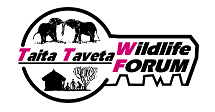 Several activities are ongoing in Sagalla hill aimed at the conservation of the Sagalla Caecilian (Boulengerula niedeni), an endemic and critically endangered species occurring in an area about 4 km2. The activities are; (i) awareness creation on the existence and extinction risk faced by the Sagalla caecilian among other species due to human activities that include draining of wetlands, clearing of native vegetation and use of agro-chemicals in farming, among others; (ii) providing support to livelihood generation of the local community through introduction of appropriate alternative livelihoods (fish-farming, bee-keeping, improved bananas) as well as training in appropriate farming techniques (organic/conservation agriculture, terracing, contour lines) so as to maintain soil fertility, soil moisture and minimise soil erosion; (iii) habitat restoration through raising of native tree seedlings and planting (in the forest, school compounds, on-farm and riverine areas), strengthening the management of the forested areas through introduction of integrated natural resource management through preparation of a “ Participatory Forest Management Plan” and formation of a “Community Forest Association (CFA)” as well as preparation of a “Sub-catchment Management Plan” and formation of a “Water Resource Users Association (WRUA)” and an ecological survey on the occurrence of the Caecilian. Also, a Species Conservation Action Plan was developed working in conjunction with Kenya Wildlife Service, Kenya Forest Service, Nature Kenya, and National Museums of Kenya, among others.
Several activities are ongoing in Sagalla hill aimed at the conservation of the Sagalla Caecilian (Boulengerula niedeni), an endemic and critically endangered species occurring in an area about 4 km2. The activities are; (i) awareness creation on the existence and extinction risk faced by the Sagalla caecilian among other species due to human activities that include draining of wetlands, clearing of native vegetation and use of agro-chemicals in farming, among others; (ii) providing support to livelihood generation of the local community through introduction of appropriate alternative livelihoods (fish-farming, bee-keeping, improved bananas) as well as training in appropriate farming techniques (organic/conservation agriculture, terracing, contour lines) so as to maintain soil fertility, soil moisture and minimise soil erosion; (iii) habitat restoration through raising of native tree seedlings and planting (in the forest, school compounds, on-farm and riverine areas), strengthening the management of the forested areas through introduction of integrated natural resource management through preparation of a “ Participatory Forest Management Plan” and formation of a “Community Forest Association (CFA)” as well as preparation of a “Sub-catchment Management Plan” and formation of a “Water Resource Users Association (WRUA)” and an ecological survey on the occurrence of the Caecilian. Also, a Species Conservation Action Plan was developed working in conjunction with Kenya Wildlife Service, Kenya Forest Service, Nature Kenya, and National Museums of Kenya, among others.
Capacity building of the CFA and the WRUA is an ongoing activity as it takes time for the local community to grasp and internalise these concepts through training and provision of appropriate learning materials.

